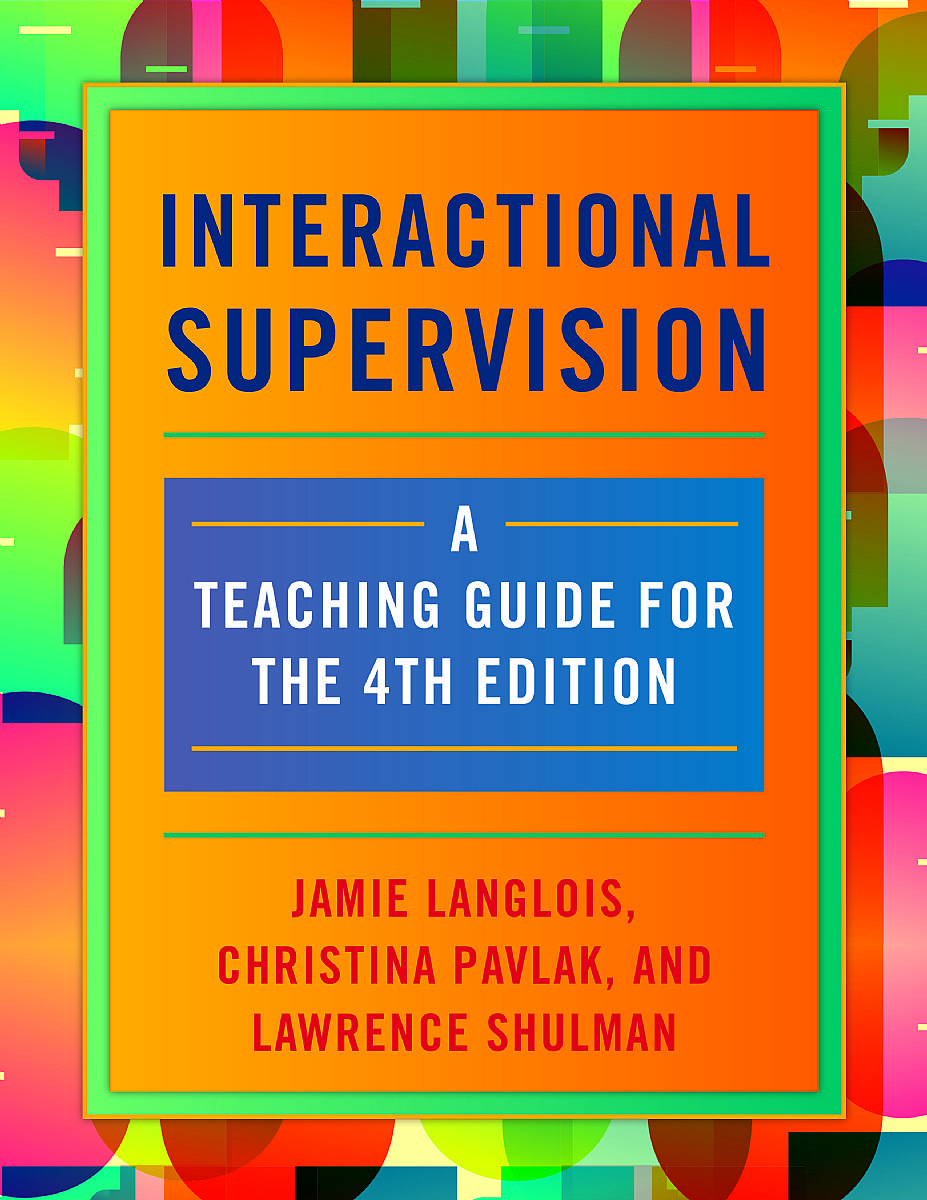
Interactional Supervision: A Teaching Guide for the 4th Edition
Page Count: 299
ISBN: N/A
Published: 2024
Can your device download this eBook? Click here before purchasing! eBooks are available in single quantities only.
Note: This product is fulfilled as a PDF (290 pages) and PowerPoint (10 slides) only. There are no printed materials. Because this is for instructors only, orders will be fulfilled once instructor status is confirmed. The primary text, Interactional Supervision, is available for sale separately.
For decades, Lawrence Shulman’s text, Interactional Supervision, has been the standard-bearer for teaching supervision, introducing students to the interactional model, work-phase skills, skills of helping, and the concept of parallel process. Now, this seminal text has a companion teaching guide designed to aid instructors—both new and experienced—in the teaching of these essential materials.
Updated in 2024, Interactional Supervision: A Teaching Guide for the 4th Edition masterfully combines Shulman’s supervision principles with activities, assignments, and quizzes that align with the 2022 Council on Social Work Education (CSWE) Educational Policy and Accreditation Standards (EPAS), the nine competencies that ensure academic excellence by establishing thresholds for learning dimensions and professional proficiency. Aligned with the 13 chapters of the original text, this teaching guide provides the following:
- Reflection Questions: Opportunities for students to articulate their knowledge, values, and cognitive and affective processes about the course content.
- Assignments: Exercises that align with specific CSWE competencies and Bloom’s taxonomy, with an eye toward the advanced skills that will be demonstrated through the completion of the work. Several assignments culminate in a term assignment, a supervision statement.
- Reading & Exam Questions: Reading questions can be used to assess knowledge in the classroom, in exams, through on-the-go quizzes, and more. Answers are provided.
- In-Class Exercises: Useful for both in-person or in an online synchronous environment, exercises align with CSWE competencies and Bloom’s taxonomy, and provide opportunities for students to apply, analyze, evaluate, and create concepts that build on content from the text.
- Online Exercises: Similar to in-class exercises, online exercises are designed to provide opportunities for students to apply, analyze, evaluate, and create concepts that build on content from the text that align with the CSWE competencies and Bloom’s taxonomy, but that are designed specifically for online asynchronous delivery with the aid of a learning management system.
Additional resources provide instructor support, such as guidelines for developing a syllabus, a matrix of learning to design your course according to chosen competencies, guidelines for leading online learning and discussion, instructions for developing a community of inquiry, and scoring rubrics for discussion board posts. Slides and handouts are provided to facilitate discussion and exercises.
Developed with learning outcomes in mind and a backward design approach, this teaching guide recognizes that competence is multidimensional. The exercises and assignments contained herein will ensure that your students achieve advanced competence through content attainment, application of knowledge, and creation of their own supervision identities, which are essential to the profession.
Acknowledgments
How to Use This Teaching Guide
Chapter 1: Introduction, Overview, and Basic Assumptions
Chapter 2: An Interactional Approach to Supervision
Chapter 3: Preparatory and Beginning Phases
Chapter 4: A Work-Phase Model
Chapter 5: Supervisory Endings and Transitions
Chapter 6: Educational Function of Supervision
Chapter 7: Evaluation Function of Supervision
Chapter 8: Supervision of Evidence-Based Practices and Evidence-Based Interventions
Chapter 9: Values, Ethics, and Legislative and Judicial Issues
Chapter 10: Formal and Informal Staff Groups
Chapter 11: Encouragement of Mutual Aid in the Staff Group
Chapter 12: Trauma, Secondary Traumatic Stress, and Disaster Stress
Chapter 13: How to Work with the System
Appendix A: Matrix of Learning: Chapter Assignments and Exercises Aligned with CSWE Competencies
Appendix B: Syllabus Snapshot
Appendix C: Bloom’s Taxonomy
Appendix D: Community of Inquiry
Appendix E: Guidelines for Online Learning: “Netiquette”
Appendix F: Guidelines for Discussion Board Posts
Appendix G: Scoring Rubrics for Discussion Board Posts
Appendix H: Handouts
Appendix I: Slides (provided separately as a PowerPoint file)
About the Authors
